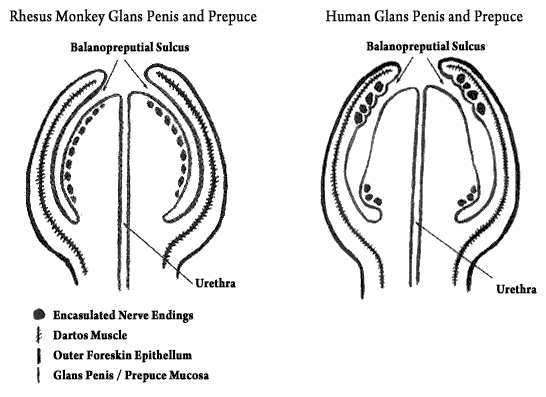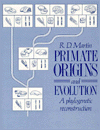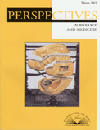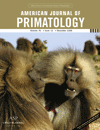Difference between revisions of "Evolution of the foreskin"
m |
m |
||
| Line 60: | Line 60: | ||
| accessdate= | | accessdate= | ||
| note= | | note= | ||
| − | }}</ref> The evolution of complex penile morphologies like the foreskin may have been influenced by females.<ref>{{REFbook | + | }}</ref> The evolution of complex penile morphologies like the foreskin may have been influenced by females.<ref name="Diamond">{{REFbook |
| last=Diamond | | last=Diamond | ||
| first=Jared M. | | first=Jared M. | ||
| Line 177: | Line 177: | ||
}}</ref> The rapid divergence in external genital anatomy between humans and ancestral apes is thought to have occurred in the last seven million years.<ref name="cold-mcgrath"/> | }}</ref> The rapid divergence in external genital anatomy between humans and ancestral apes is thought to have occurred in the last seven million years.<ref name="cold-mcgrath"/> | ||
| − | The external genitalia of primates are marked by an astounding variety of specialized structures, but over the past 65 million years, the prepuce has not only withstood the test of time, it has also evolved in its complexity. The survival and further development of the human penile prepuce in the face of the extraordinarily rapid evolution of humans over the last 7 to 9 million years is particularly noteworthy, especially against the background of a fourfold increase in penile size.<ref | + | The external genitalia of primates are marked by an astounding variety of specialized structures, but over the past 65 million years, the prepuce has not only withstood the test of time, it has also evolved in its complexity. The survival and further development of the human penile prepuce in the face of the extraordinarily rapid evolution of humans over the last 7 to 9 million years is particularly noteworthy, especially against the background of a fourfold increase in penile size.<ref name="Diamond"/> |
| − | |||
| − | |||
| − | |||
| − | |||
| − | |||
| − | |||
| − | |||
| − | |||
| − | |||
| − | |||
| − | |||
| − | |||
| − | |||
| − | |||
| − | |||
| − | |||
| − | |||
| − | === Comparative | + | === Comparative anatomy === |
| − | A histologic study of the penile and clitoral prepuce, carried out on human and non-human primates, showed that corpuscular receptors are concentrated at the prepuce/glans penis and the prepuce/glans clitoridis interface in humans and rhesus monkeys.<ref>{{REFjournal | + | A histologic study of the penile and clitoral prepuce, carried out on human and non-human primates, showed that corpuscular receptors are concentrated at the prepuce/glans penis and the prepuce/glans clitoridis interface in humans and rhesus monkeys.<ref name="macaca">{{REFjournal |
| last=Cold, C.; Tarara, R. | | last=Cold, C.; Tarara, R. | ||
| − | | first= | + | | first= |
| coauthors= | | coauthors= | ||
| title=Penile and clitoral prepuce mucocutaneous receptors in macaca mulatta | | title=Penile and clitoral prepuce mucocutaneous receptors in macaca mulatta | ||
| Line 218: | Line 201: | ||
[[Image:Rhesus-Monkey-&-Human-Penis.gif]] | [[Image:Rhesus-Monkey-&-Human-Penis.gif]] | ||
| − | The rhesus monkey has fewer corpuscular receptors in the prepuce (foreskin) and more corpuscular receptors in the glans (head). In humans, however, the glans penis has few corpuscular receptors and predominant free nerve endings,<ref>Halata, Z, & Spaethe, A. (1997). Sensory innervation of the human penis. Plenum Press.</ref><ref name="halta86">Halata, Z, & Munger, B. (1986). The neuroanatomical basis for the protopathic sensibility of the human glans penis. Brain Res, 34(506)</ref> consistent with protopathic sensibility. Protopathic simply refers to a low order of sensibility (consciousness of sensation), such as to deep pressure and pain, that is poorly localised. The human glans penis has virtually no fine touch sensation and can only sense deep pressure and pain at a high threshold.<ref>Von, | + | The rhesus monkey has fewer corpuscular receptors in the prepuce (foreskin) and more corpuscular receptors in the glans (head). In humans, however, the glans penis has few corpuscular receptors and predominant free nerve endings,<ref>Halata, Z, & Spaethe, A. (1997). Sensory innervation of the human penis. Plenum Press.</ref><ref name="halta86">Halata, Z, & Munger, B. (1986). The neuroanatomical basis for the protopathic sensibility of the human glans penis. Brain Res, 34(506)</ref> consistent with protopathic sensibility. Protopathic simply refers to a low order of sensibility (consciousness of sensation), such as to deep pressure and pain, that is poorly localised. The human glans penis has virtually no fine touch sensation and can only sense deep pressure and pain at a high threshold.<ref>Von, F.M. (1894). Beiträge zur Physiologie des Schmerzsinns. Akad Wiss Leipzig Math.-Naturwiss Kl Ber.</ref><ref name="macaca"/> While the human glans penis is protopathic, the prepuce contains a high concentration of touch receptors in the ridged band.<ref name="cold-mcgrath"/> |
In the human penis, the prepuce is known to have ten times more corpuscular sensory receptors than the glans penis.<ref name="halta86"/> | In the human penis, the prepuce is known to have ten times more corpuscular sensory receptors than the glans penis.<ref name="halta86"/> | ||
Revision as of 18:44, 10 September 2019
Millions of years of evolution have fashioned the human body into a model of refinement, elegance, and efficiency, with every part having a function and purpose. Evolution has determined that mammals' genitals should be sheathed in a protective, responsive, multipurpose foreskin. Every normal human being is born with a foreskin. In females, it protects the glans of the clitoris; in males, it protects the glans of the penis. Thus, the foreskin is an essential part of human sexual anatomy.[1]
Over the last 65 million years, the prepuce has offered reproductive advantages. Although advocates of mass circumcision hypothesize that the prepuce represents a design flaw, it is more likely that sexual selection has refined the external genitalia of each primate species for reproductive excellence.[2]
The reproductive advantages provided by the prepuce during the last 65 million years should not be taken lightly. The human prepuce is not "vestigial" but is, in fact, an evolutionary advancement over the prepuce of other primates.[2]
Contents
Evolution
Morphology
The prepuce has been well conserved by evolution.[2] In primates, the foreskin has been present in the genitalia of both sexes of mammals for at least 65 million years and likely has been present for over 100 millions years of evolution, based on its commonality as an anatomical feature in mammals.[3] The evolution of complex penile morphologies like the foreskin may have been influenced by females.[4][5][6] It has been proposed that the foreskin evolved to facilitate masturbation.[7] The human prepuce has an increase in corpuscular innervation and concomitant decrease in corpuscular receptors in the human glans compared to the prepuce and glans of lower primates, demonstrating an evolutionary advancement.[8][9] The human penis has retained and modified its prepuce over a period of extraordinarily evolution.[10] The rapid divergence in external genital anatomy between humans and ancestral apes is thought to have occurred in the last seven million years.[2]
The external genitalia of primates are marked by an astounding variety of specialized structures, but over the past 65 million years, the prepuce has not only withstood the test of time, it has also evolved in its complexity. The survival and further development of the human penile prepuce in the face of the extraordinarily rapid evolution of humans over the last 7 to 9 million years is particularly noteworthy, especially against the background of a fourfold increase in penile size.[4]
Comparative anatomy
A histologic study of the penile and clitoral prepuce, carried out on human and non-human primates, showed that corpuscular receptors are concentrated at the prepuce/glans penis and the prepuce/glans clitoridis interface in humans and rhesus monkeys.[11] Surprisingly different patterns of innervation, however, are seen between human and non-human male primates.[2]
The rhesus monkey has fewer corpuscular receptors in the prepuce (foreskin) and more corpuscular receptors in the glans (head). In humans, however, the glans penis has few corpuscular receptors and predominant free nerve endings,[12][13] consistent with protopathic sensibility. Protopathic simply refers to a low order of sensibility (consciousness of sensation), such as to deep pressure and pain, that is poorly localised. The human glans penis has virtually no fine touch sensation and can only sense deep pressure and pain at a high threshold.[14][11] While the human glans penis is protopathic, the prepuce contains a high concentration of touch receptors in the ridged band.[2]
In the human penis, the prepuce is known to have ten times more corpuscular sensory receptors than the glans penis.[13]
The male and female prepuce has persisted in all primates, which strongly supports the contention that the prepuce is valuable genital sensory tissue. The corpora cavernosa and the prepuce are the only two universally common characteristics of the primate penis.[2]
See also
Further reading
- Denniston, GC, & Hodges, FM. (1999). Anatomy and histology of the penile and clitoral prepuce in primates. Kluwer Academic/Plenum Publishers
- Martin, RD. (1990). Primate origins and evolution: a phylogenetic reconstruction. New Jersey: Princeton University Press.
- Butler, AB, & Hodos, W. (1996). Comparative vertebrate neuroanatomy: evolution and adaptation. New York: Wiley-Liss.
Videos
Functions of The Foreskin - Part 1
Functions of The Foreskin - Part 2
References
- ↑
 Fleiss, Paul M.. The Case Against Circumcision. Mothering: The Magazine of Natural Family Living. 1997; : 36-45.
Fleiss, Paul M.. The Case Against Circumcision. Mothering: The Magazine of Natural Family Living. 1997; : 36-45.
- ↑ a b c d e f g
 Cold, Christopher; McGrath, Kenneth (1999):
Cold, Christopher; McGrath, Kenneth (1999): Anatomy and histology of the penile and clitoral prepuce in primates
, in: Male and female circumcision: medical, legal, and ethical considerations in pediatric practice. New York ISBN 0306461315. - ↑
 Martin, Robert D. (1990): Primate Origins and Evolution: A Phylogenetic Reconstruction. New Jersey: Princeton University Press. ISBN 978-0-691-08565-4.
Martin, Robert D. (1990): Primate Origins and Evolution: A Phylogenetic Reconstruction. New Jersey: Princeton University Press. ISBN 978-0-691-08565-4.
- ↑ a b
 Diamond, Jared M. (1997): Why Sex is Fun: The Evolution of Human Sexuality. London: Weidenfeld & Nicolson. ISBN 0465031269.
Diamond, Jared M. (1997): Why Sex is Fun: The Evolution of Human Sexuality. London: Weidenfeld & Nicolson. ISBN 0465031269.
- ↑
 Darwin, Charles (1871): The Descent of Man and Selection in Relation to Sex. London: Murray. ISBN 1148750932.
Darwin, Charles (1871): The Descent of Man and Selection in Relation to Sex. London: Murray. ISBN 1148750932.
- ↑
 Short, RV (1981):
Short, RV (1981): Sexual selection in man and the great apes
, in: Reproductive Biology of the Great Apes: Comparative and Biomedical Perspectives. Graham CE (ed.). New York: Academic Press. - ↑
 Cox, Guy. De virginibus puerisque: The function of the human foreskin considered from an evolutionary perspective. Med Hypotheses. 1995; 45(6): 617-21. PMID.
Cox, Guy. De virginibus puerisque: The function of the human foreskin considered from an evolutionary perspective. Med Hypotheses. 1995; 45(6): 617-21. PMID.
- ↑
 Nadler, Ronald D.. Proximate and ultimate influences on the regulation of mating in the great apes. American Journal of Primatology. 1995; 37(2): 93-102. DOI.
Nadler, Ronald D.. Proximate and ultimate influences on the regulation of mating in the great apes. American Journal of Primatology. 1995; 37(2): 93-102. DOI.
- ↑
 Williams-Ashman, HG. Enigmatic features of penile development and functions. Perspectives in Biology and Medicine. 1990; 33: 335-74. PMID.
Williams-Ashman, HG. Enigmatic features of penile development and functions. Perspectives in Biology and Medicine. 1990; 33: 335-74. PMID.
- ↑
 Dixson, A. F.. Baculum length and copulatory behavior in primates. American Journal of Primatology. 1987; 13(1): 51-60. DOI. Retrieved 22 June 2010.
Dixson, A. F.. Baculum length and copulatory behavior in primates. American Journal of Primatology. 1987; 13(1): 51-60. DOI. Retrieved 22 June 2010.
- ↑ a b
 Cold, C.; Tarara, R.. Penile and clitoral prepuce mucocutaneous receptors in macaca mulatta. Vet Pathol. 1997; 34(506)
Cold, C.; Tarara, R.. Penile and clitoral prepuce mucocutaneous receptors in macaca mulatta. Vet Pathol. 1997; 34(506)
- ↑ Halata, Z, & Spaethe, A. (1997). Sensory innervation of the human penis. Plenum Press.
- ↑ a b Halata, Z, & Munger, B. (1986). The neuroanatomical basis for the protopathic sensibility of the human glans penis. Brain Res, 34(506)
- ↑ Von, F.M. (1894). Beiträge zur Physiologie des Schmerzsinns. Akad Wiss Leipzig Math.-Naturwiss Kl Ber.








